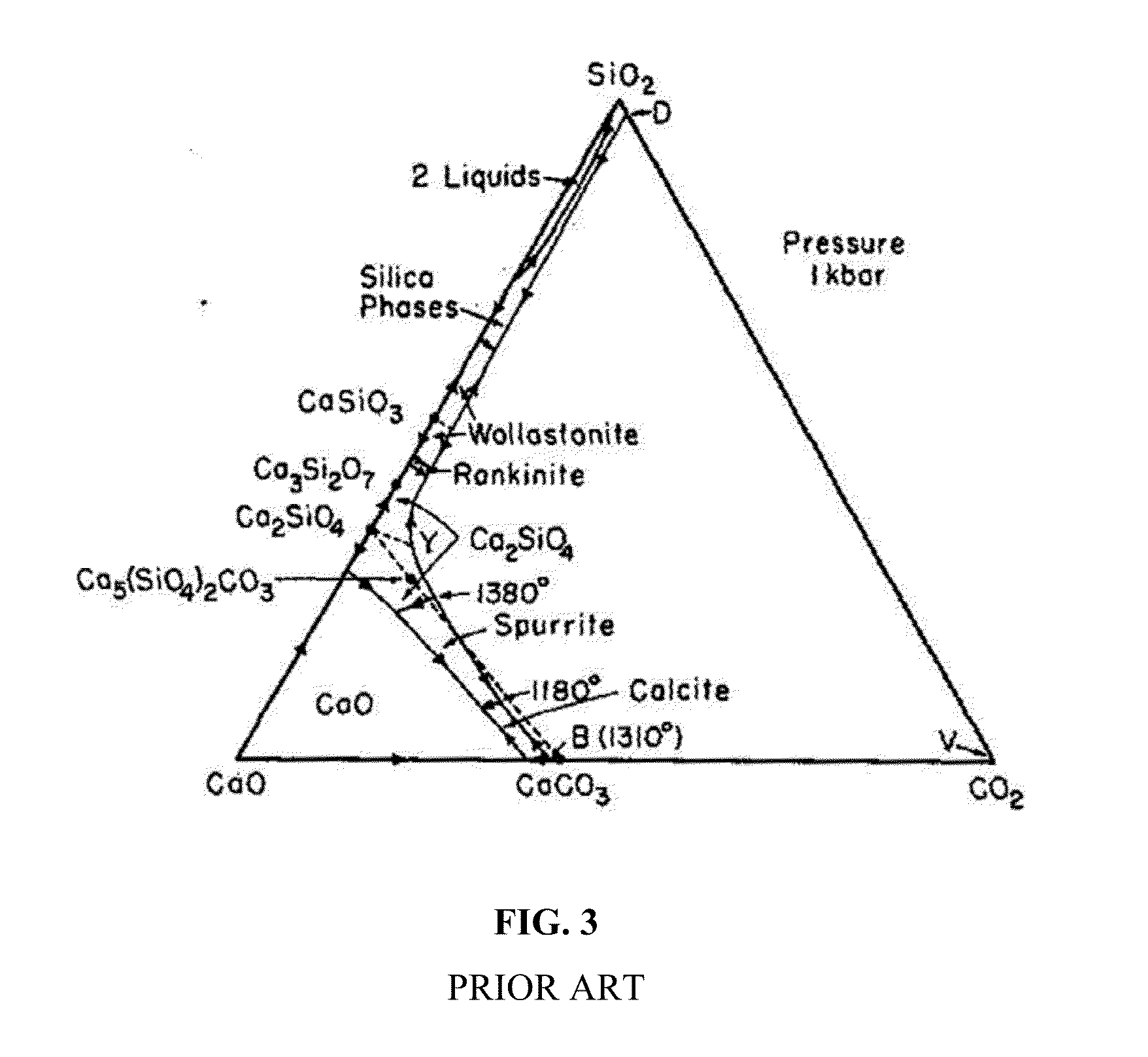Anticorrosive coatings, processes and uses thereof
a technology of anticorrosion coatings and coatings, applied in the direction of coatings, solid-state diffusion coatings, synthetic resin layered products, etc., can solve the problems of compromising the protective layer, too little concrete cover or loss of coverage, and easy rusting, etc., to achieve the effect of reducing the carbon footprin
- Summary
- Abstract
- Description
- Claims
- Application Information
AI Technical Summary
Benefits of technology
Problems solved by technology
Method used
Image
Examples
example 1
Anticorrosive Coating for Steel Rebar
[0161]Anticorrosive coatings were formed and corrosion performance was tested. The raw materials were mixed. The mixture proportions (Solidia Cement) used to cast concrete cylinders are shown in Table 2.
TABLE 2Mixing Proportions (for 10 Kg batch size)AmountIngredientsWt. %(kg)Ground calcium silicate18%1.701Sieved Construction sand31%2.929¼″ aggregate25%2.344⅜″ aggregate26%2.457Total of Solid Components94.40% 9.431Tap water5.50% 0.556Glenium75000.013Total of Liquid Components5.60% 0.563Total of Solid and Liquid100% 10.000
[0162]Cylinder-shaped objects (4″ diameter×8″ long as shown in FIG. 13) were casted in a mold with plain carbon steel embedded inside as reinforcing components. The cylindrical objects were demolded after 2 hours of casting.
[0163]The two-casted cylinders were placed in a curing chamber and cured at about 60° C. for about 60 hours under an atmosphere of water and CO2 having a pressure at about ambient atmospheric pressure and havi...
example 2
Anticorrosive Coating for Steel Panel
[0166]Two plain carbon steel coupons of size 1″(width)×3″ (Length)×⅛″(thickness) were submerged completely in a beaker filled with tap water. This beaker was then exposed environmental conditions (60° C. and atmospheric pressure) typically used to carbon cure concretes containing ground calcium silicate for 65 hours. This coupon was made of composition which is normally used for making racking materials for curing chambers. The products formed during carbonation curing were analyzed using x-ray diffraction. The x-ray diffraction pattern is shown in FIG. 18, which indicates formation of siderite coating on plain carbon steel during exposure to CO2 environment.
example 3
Anticorrosive Coating on Ductile Cast Iron
[0167]In another experiment, ductile cast iron specimen (0.71 diameter×2.2055 inch long) were put in 1 M NaHCO3 solution in 1500 mL jars. The jars were put in oven at 60° C. and 90° C. for 24 hours. The specimens were then removed and rinsed with tap water before XRD and SEM analysis to characterize the corrosion products formed. FIG. 19 depicts XRD pattern which shows siderite coatings formed on the surface. FIG. 20 shows SEM image for this specimen which confirms the formation of siderite coatings during this reaction.
PUM
| Property | Measurement | Unit |
|---|---|---|
| thickness | aaaaa | aaaaa |
| temperature | aaaaa | aaaaa |
| time period | aaaaa | aaaaa |
Abstract
Description
Claims
Application Information
 Login to View More
Login to View More - R&D
- Intellectual Property
- Life Sciences
- Materials
- Tech Scout
- Unparalleled Data Quality
- Higher Quality Content
- 60% Fewer Hallucinations
Browse by: Latest US Patents, China's latest patents, Technical Efficacy Thesaurus, Application Domain, Technology Topic, Popular Technical Reports.
© 2025 PatSnap. All rights reserved.Legal|Privacy policy|Modern Slavery Act Transparency Statement|Sitemap|About US| Contact US: help@patsnap.com



